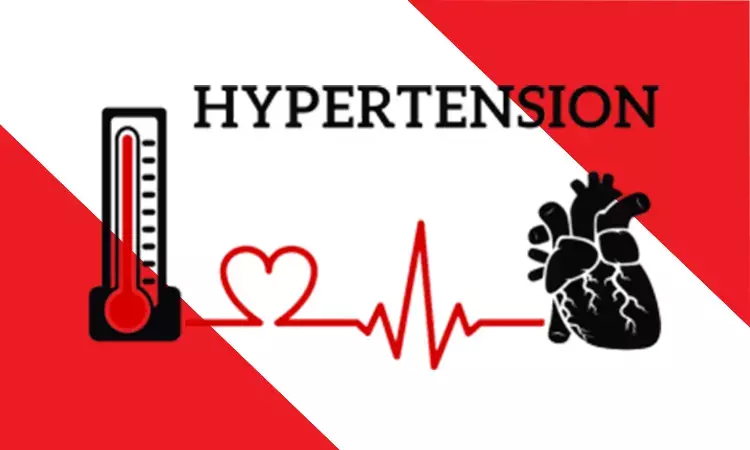- Home
- Medical news & Guidelines
- Anesthesiology
- Cardiology and CTVS
- Critical Care
- Dentistry
- Dermatology
- Diabetes and Endocrinology
- ENT
- Gastroenterology
- Medicine
- Nephrology
- Neurology
- Obstretics-Gynaecology
- Oncology
- Ophthalmology
- Orthopaedics
- Pediatrics-Neonatology
- Psychiatry
- Pulmonology
- Radiology
- Surgery
- Urology
- Laboratory Medicine
- Diet
- Nursing
- Paramedical
- Physiotherapy
- Health news
- Fact Check
- Bone Health Fact Check
- Brain Health Fact Check
- Cancer Related Fact Check
- Child Care Fact Check
- Dental and oral health fact check
- Diabetes and metabolic health fact check
- Diet and Nutrition Fact Check
- Eye and ENT Care Fact Check
- Fitness fact check
- Gut health fact check
- Heart health fact check
- Kidney health fact check
- Medical education fact check
- Men's health fact check
- Respiratory fact check
- Skin and hair care fact check
- Vaccine and Immunization fact check
- Women's health fact check
- AYUSH
- State News
- Andaman and Nicobar Islands
- Andhra Pradesh
- Arunachal Pradesh
- Assam
- Bihar
- Chandigarh
- Chattisgarh
- Dadra and Nagar Haveli
- Daman and Diu
- Delhi
- Goa
- Gujarat
- Haryana
- Himachal Pradesh
- Jammu & Kashmir
- Jharkhand
- Karnataka
- Kerala
- Ladakh
- Lakshadweep
- Madhya Pradesh
- Maharashtra
- Manipur
- Meghalaya
- Mizoram
- Nagaland
- Odisha
- Puducherry
- Punjab
- Rajasthan
- Sikkim
- Tamil Nadu
- Telangana
- Tripura
- Uttar Pradesh
- Uttrakhand
- West Bengal
- Medical Education
- Industry
Hypertension increases risk and severity of Epistaxis, Study finds

Researchers have recently found that patients with hypertension have an increased risk of epistaxis requiring hospital visits, as published in the JAMA Otolaryngology- Head and Neck Surgery.
The association between hypertension and epistaxis has long been a subject of debate, hence, Hayoung Byun and colleagues from the Department of Otolaryngology-Head and Neck Surgery, School of Medicine, Hanyang University, Seoul, Republic of Korea conducted this study to evaluate the risk of epistaxis in patients with hypertension using a nationwide population cohort and to assess the association of hypertension with the methods of managing cases of epistaxis.
The hypertension cohort comprised of 35,749 patients with a record of 3 or more prescriptions of antihypertensive medication and a diagnosis of hypertension (International Statistical Classification of Diseases and Related Health Problems, Tenth Revision code I10). Patients with other diseases associated with epistaxis, such as sinonasal tumors, facial trauma, bleeding tendency, and coagulation disorder, as well as those taking anticoagulant medications, were excluded. A comparison cohort comprised 35,749 individuals without hypertension matched sociodemographically in a 1:1 ratio. Statistical analysis was then performed.
The incidence and recurrence of epistaxis were evaluated in both cohorts. The risk factors for epistaxis and management strategies were also assessed.
The following results were observed-
a. Among the 35 749 patients in the hypertension cohort (20 579 men [57.6%]; median age, 52 years [interquartile range, 45-62 years]) the incidence rate (IR) of epistaxis was 32.97 per 10 000 persons (95% CI, 30.57-35.51 per 10 000 persons).
b. Among the 35 749 individuals in the comparison cohort (20 910 men [58.5%]; median age, 52 years [interquartile range, 45-62 years]), the IR of epistaxis was 22.76 per 10 000 persons (95% CI, 20.78-24.89 per 10 000 persons) (IR ratio, 1.45; 95% CI, 1.29-1.63; adjusted hazard ratio, 1.47; 95% CI, 1.30-1.66).
c. The IR of recurrent epistaxis was 1.96 per 10 000 persons in the hypertension cohort and 1.59 per 10 000 persons in the nonhypertension cohort (IR ratio, 1.23; 95% CI, 0.77-2.00).
d. Patients with hypertension who experienced epistaxis were more likely to use the emergency department (odds ratio, 2.69; 95% CI, 1.70-4.25; Cohen h effect size, 0.27; 95% CI, 0.16-0.39) and receive posterior nasal packing (odds ratio, 4.58; 95% CI, 1.03-20.38; Cohen h effect size, 0.15; 95% CI, 0.03-0.26) compared with the comparison cohort.
Therefore, the authors concluded that "patients with hypertension had an increased risk of epistaxis requiring hospital visits. In addition, epistaxis in patients with hypertension appeared to need more emergency department visits and require more posterior nasal packing procedures compared with patients without hypertension. Medical counseling about epistaxis is advisable for individuals with hypertension, and the presence of hypertension should be considered in managing nasal bleedings."
Dr. Nandita Mohan is a practicing pediatric dentist with more than 5 years of clinical work experience. Along with this, she is equally interested in keeping herself up to date about the latest developments in the field of medicine and dentistry which is the driving force for her to be in association with Medical Dialogues. She also has her name attached with many publications; both national and international. She has pursued her BDS from Rajiv Gandhi University of Health Sciences, Bangalore and later went to enter her dream specialty (MDS) in the Department of Pedodontics and Preventive Dentistry from Pt. B.D. Sharma University of Health Sciences. Through all the years of experience, her core interest in learning something new has never stopped. She can be contacted at editorial@medicaldialogues.in. Contact no. 011-43720751
Dr Kamal Kant Kohli-MBBS, DTCD- a chest specialist with more than 30 years of practice and a flair for writing clinical articles, Dr Kamal Kant Kohli joined Medical Dialogues as a Chief Editor of Medical News. Besides writing articles, as an editor, he proofreads and verifies all the medical content published on Medical Dialogues including those coming from journals, studies,medical conferences,guidelines etc. Email: drkohli@medicaldialogues.in. Contact no. 011-43720751


